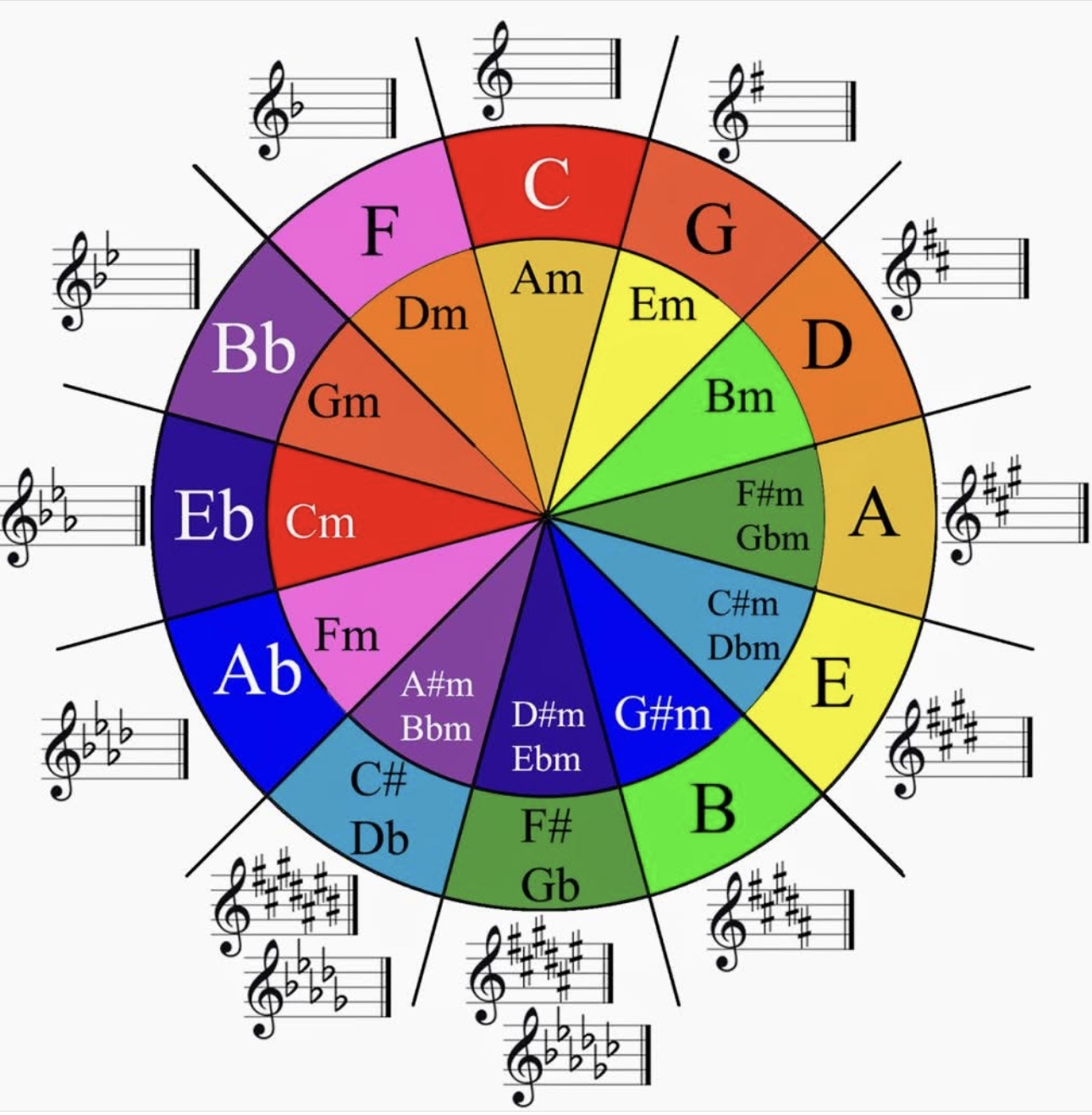
The term “rock music” was first used in the 1950s to describe the new genre of popular music that evolved from a combination of blues, country, and rhythm and blues.
Do you need a music degree to master rock theory? Absolutely NOT! As rock musicians, we often pride ourselves on the raw authenticity that comes from playing by feel rather than following traditional music theory.
However, even the most instinctive players can benefit from grasping some basic rock theory principles. It enhances creativity and offers new tools to express musical ideas.
Understanding guitar music theory for beginners doesn’t mean getting bogged down with complex concepts. Instead, it’s all about simplifying traditional theory to fit the unique vibe and needs of rock.

This genre thrives on patterns, simplicity, and repetition, making it more approachable for self-taught musicians. While traditional genres of rock may primarily use simple scales and progressions, more progressive sub-genres (e.g., progressive rock or jazz fusion) often incorporate complex theory.
Learning some basic music theory can boost your creative juices. It helps you write songs, create mind-bending solos, or jam with a band with confidence. Understanding the basics connects with your natural style and makes it easier to share ideas and collaborate with others.
Mastering the basics of scales and chords is a MUST for anyone looking to play or write rock music seriously. These elements form the backbone of the rock, sculpting everything from catchy riffs to memorable solos.
Scales in rock are typically less complex, revolving around major, minor, and pentatonic patterns. These scales have a unique way of delivering the raw, expressive energy rock is known for.
Take a look at the ‘Beginner Lesson for Electric Guitar: Rock 101’ for more info on scales.
Emphasizing simplicity, rock scales often emphasize repetitive yet powerful melodies that stick in your head and get your feet tapping.

Guitar solos, a hallmark of rock music, rely heavily on knowing your scales. Having these under your belt lets you improvise with confidence, adding personality and flair to each note.
Understanding how melodies grow from these scales can transform your solo from basic to brilliant.
When it comes to chords, rock typically uses straightforward major and minor structures. Power chords, in particular, are simple yet powerful tools that define the genre. These chords consist of only the root and fifth, leave out tonal thirds, creating their iconic neutral and driving quality.
Classic chord progressions, like those from the blues, or the popular I-IV-V sequences, are often used as reliable frameworks. Think of popular songs such as
Recognizing and experimenting with these can greatly enhance your ability to play along with your favorite tunes or compose original pieces with ease.
Grasping the essentials of music theory opens up a world of creative possibilities, especially for those wanting to push the boundaries of rock music and rock guitar especially. It’s about harnessing this knowledge to simplify the creative process, making songwriting and jamming more intuitive.
Begin by integrating scales into your music, experimenting in various keys to see what resonates with your unique style. Knowing major, minor, and pentatonic scales not only aids improvisation but also helps in songwriting that truly rocks.
Chords add color and depth to your music. Getting comfortable with major and minor chords in different positions can make collaborations smoother and more dynamic.
Don’t shy away from exploring chord extensions like adding 2nds, 4ths, or 7ths; they can offer unexpected twists that take a song to new heights.
“Instead of thinking in terms of chords, I think of voice-leading”. — Paul Simon
He believed that the melody line and bass line, and where the bass line goes, determine the right chord. Paul Simon, known for blending rock with folk, often used unique chord progressions that went beyond conventional structures of the era.
For those ready to dive deeper, try harmonizing scales using 6ths and 3rds. It’s a fantastic method for creating harmonies that stand out. Studying chord progressions in multiple keys will also make your music more versatile and adaptable.
Instead of seeing chords as static, try changing the middle note to see how it changes the sound. Modulation, pedal tones, vamps, and polyrhythms are other sophisticated methods to enrich your musical expression without losing that authentic rock feel.
The key is to apply what you learn in a way that complements your instinctual playstyle. Use theory as a guide, not a rulebook, and watch as your creativity and technical skills grow in tandem.

ABSOLUTELY YOU CAN! Teaching yourself anything new depends on how you align your passion with your end goals. Striving to become a better musician has always motivated me to have a better understanding of music theory.
Having knowledge of scales, chords, notes, melody, harmony, and rhythm helps with making the musical puzzle pieces fit.
Think of music theory as the “grammar” of music. You learn the rules of grammar to understand language. In the same way, musicians learn theory to effectively communicate ideas and interpret compositions. This is “music grammar.”
*While the Circle of 5ths (image above) is essential to understanding key signatures in general, rock often relies on patterns rather than strict adherence to traditional harmonic rules.
Well, this depends on your prior musical experience and individual aptitude. Music theory is challenging but very learnable with the proper dedication. Those with experience in reading music and playing instruments may find it easier to comprehend.
Honestly, best practice would be to learn theory and apply it while you’re practicing your instrument. It will all come together easier when using this method. One theory at a time.
So for example, learn and understand a scale, then physically play it. This will reinforce the theory that you just learned.
Some rock musicians have achieved success without formal knowledge of music theory, but having a solid understanding of these concepts can only enhance creativity and musical proficiency.

As you know, much of rock music is about attitude but knowing and understanding harmony, melody, rhythm, and composition provide tools for songwriting This allows a musician to make more informed choices about chord progressions and song structure.
It all adds to the creative process as it opens up many possibilities that you may have never thought of. Also, it helps with communication amongst other musicians and will help with composing more diverse styles to create your unique masterpieces.
Rhythm is how music is organized in time.
Rock is about breaking rules, but knowing them first helps craft songs people will remember. Whether you’re playing with scales or just crushing power chords like there’s no tomorrow, keep pushing yourself and learning.
The coolest part?
There’s no “wrong” way to rock, so go make some glorious noise and OWN it!
Understanding rock music theory for beginners is like unlocking a secret code to your favorite riffs and harmonies. You’ve got the basics, now it’s time to grab your guitar or instrument of choice and start experimenting with those scales and progressions.
Build confidence one note at a time, and don’t forget, rock is about feeling it, not just playing it. Let yourself make mistakes because that’s where the magic happens!
— Steve, String Shock

Lorem ipsum dolor sit amet, consectetur adipiscing elit. Praesent sit amet elementum massa. Ut gravida risus at dui dapibus tristique...Read More